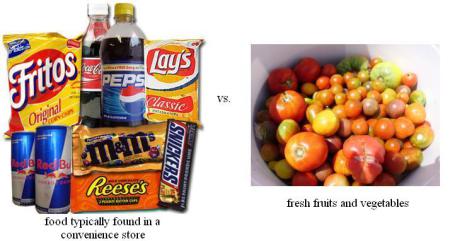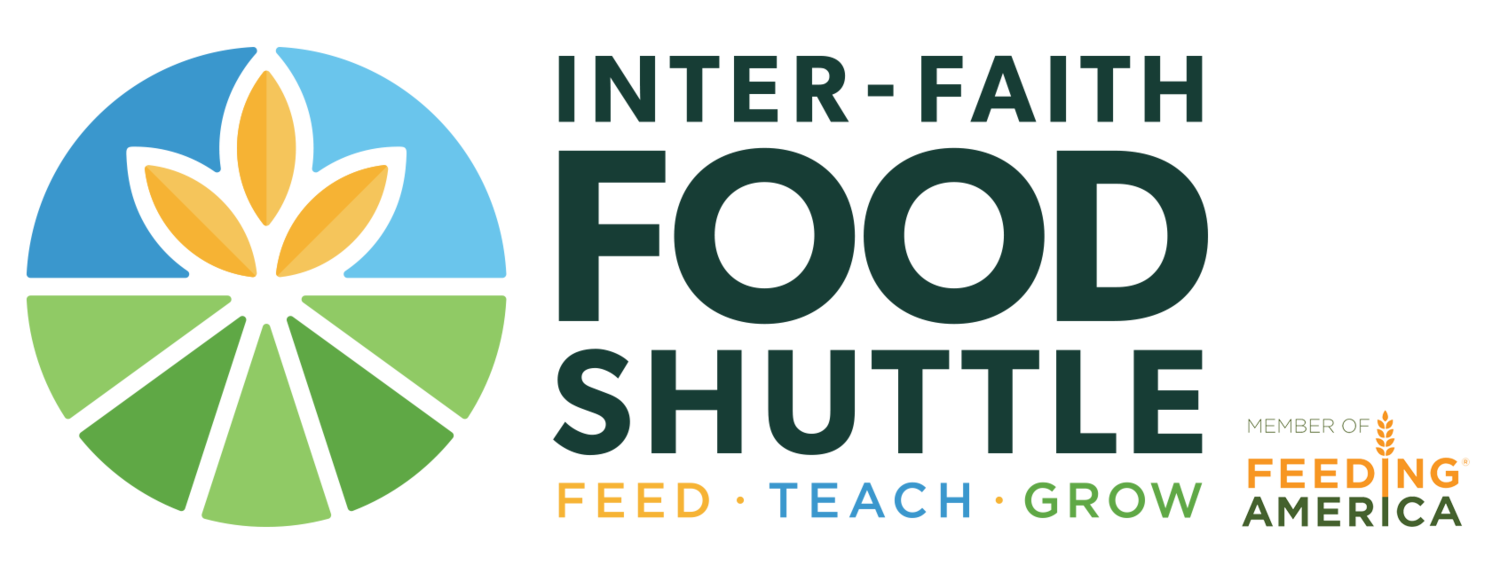By Mollie Mayfield, IFFS Communications Coordinator, NC Public Ally
At your local gas station or convenience store, what kind of food lines the walls? Most likely the shelves are full of chips, candy, snack-food, sodas, and other highly processed packaged foods. The store likely offers less than the full nutritional spectrum needed to maintain a healthy diet, much less fresh fruits and vegetables. But what if this were where you had to grocery shop on a regular basis? What if this were the only accessible option other than fast-food restaurants to get something to eat in the community where you lived?

The term “food desert” often arises in conversations about hunger. But what exactly are these “food deserts” we speak of? You may think, “But we live in North Carolina! There are no deserts here!” Actually, the term “food desert” doesn’t refer to a place that gets very little rain. Rather, it refers to a place that has very little access to nutritious, affordable food. These are places where no grocery stores, farmer’s markets or produce stands exist within a distance of one mile in urban areas or within ten miles in rural areas.
Specifically, the USDA defines a food desert as, "a census tract with a substantial share of residents who live in low-income areas that have low levels of access to a grocery store or healthy, affordable food retail outlet.”[ii].
There are two main factors leading to food hardship: income and access. Food deserts reflect a geographical lack of access to enough healthy, nutritious food. They indicate areas with a high level of potential for food insecurity. However, they are by no means the only indicator of potential hunger. Income as a barrier to food security plays a large role as well, determining, for example, whether a family or individual has access to car - making their geographical location play either more or less of a role in determining their level of food security. A family can live right next to a grocery store but still be hungry without enough income. But when lack of access combines with barriers to income, it may become a daily challenge to know where your next meal is coming from.
Who lives in food deserts?
To qualify as low-income, at least 20% of the community must live below the poverty line or the community must have a median family income at or below 80% of the of the area median family income.[iii] To qualify as “low-access”, at least 500 people and/or at least 30% of the population must live more than a mile from a super market or large grocery store in urban areas and more than 10 miles away in rural areas.[iv] Food deserts are also more prevalent in low-income communities of color.[v]
How does living in a food desert affect daily life?
What if you live in one of these areas and you don’t own a car or have a reliable form of transportation? What about seniors or other individuals who can’t drive? As First Lady Michelle Obama said,
“If a parent wants to pack a piece of fruit in a child’s lunch, if a parent wants to add some lettuce to a salad at dinner, they shouldn’t have to take three city busses…to go to another community to make that possible.”[x]
Families and individuals living in these areas may have to rely on gas stations and dollar stores for food on a regular basis. Getting to an actual grocery store may be much more difficult and time-consuming than in other areas. In an interview on WUNC's "The State of Things" in March, TROSA Grocery manager Wendy Noel noted that before the store opened in East Durham last year, some community members routinely had to spend 4-6 hours just to go grocery shopping.[i] This lack of access leads to hunger, less healthy diets, obesity, and other diet-related chronic diseases such as diabetes and heart disease. Often when we think of someone who is hungry, we picture a child with a distended belly in Africa or a homeless person moving through a line at a soup kitchen. But hunger here in the US and in our own community is a little more hidden. With access to only calorie-dense, nutritionally-poor food items, hunger may in fact look like obesity. Read more about this here.
Where do food deserts exist? Right in our own backyards.
USDA’s Food Desert Locator: http://www.ers.usda.gov/data/fooddesert/

USDA’s Food Environment Atlas http://www.ers.usda.gov/data-products/food-environment-atlas.aspx

Why do food deserts exist?
- In rural areas, isolation contributes to a lack of access. There may be a lack of transportation infrastructure to enable those who do not own cars to get to a grocery store or supermarket. Other contributing factors include the decline of the agricultural lifestyle, high rates of unemployment, and an economic environment unable to sustain a large grocery store.[vi] Even in some agricultural areas, the food produced there is sold elsewhere. Without a sufficient customer base to move produce quickly, shelf-life also becomes a barrier for even small stores stocking fresh fruits and vegetables.[vii]
- Even in urban areas, lack of transportation infrastructure can present a problem. Additionally, lot sizes for larger stores are less available due to density, and the larger grocery stores are less likely to set up shop in low-income areas where people have less money to spend on food and consumer demand is lower than in wealthier areas.[viii] The smaller stores that do exist in areas of lower socioeconomic status (SES) do not benefit from economies of scale and have little competition, so they may sell food at higher prices.[ix]
So what is the Inter-Faith Food Shuttle doing about this?
At the Inter-Faith Food Shuttle, in addition to recovering food and distributing it to 212 programs and agencies that feed the hungry, we also run a number of programs to increase access to healthy, affordable food, including:
- Mobile markets - We directly distribute both fresh produce and dry and canned goods through 36 free mobile markets at health clinics and community centers in neighborhoods in need. We bring the food into food-insecure communities without ready access to enough food for an active and healthy life. At the markets, community members can choose which foods they would like, just as at a regular market, and because the mobile markets are located at community centers, residents don’t have to travel far to reach them.

- Community gardens program. Another way to increase access to nutritious and affordable food is through gardening. Community gardens create a source of fresh, local foods. Through innovative initiatives and partnerships, the Inter-Faith Food Shuttle provides community members with education and tools necessary to improve community health and nutrition. Not only can they grow food to eat right in their own community, but community members are empowered to take back control of their food choices and lead healthier lives through increased access to fresh produce, nutrition and culinary education, and opportunities for leadership development, community building, and physical activity. Check out this success story at our community garden site and partner Parrish Manor creating a healthy, active community in a "food and recreation desert."

- Grocery bags for low-income seniors and families - We distribute 425 bags of produce and groceries each week to low-income seniors and families at 32 sites who may not have the mobility or the resources to go to the grocery store.
- Economic Empowerment - The IFFS Culinary Job Training Program provides an opportunity for people to break the cycle of poverty. The 11 week program teaches culinary skills, ServSafe food safety, as well as other life and employment skills. Through our Young Farmer Training Program, we teach the farmers of tomorrow, providing sustainable, organic farming education for teens. We teach students how to implement profitable crop plans and manage a small business.

- Empowerment through Nutrition Education - We strive to educate and empower our neighbors and community members, teaching people in the community how to navigate the food system to select, grow, and prepare nutritious foods on a limited budget through our Nutrition Education Programs including Cooking Matters, Food Matters, and Shopping Matters classes. These courses equip participants with the knowledge, skills, and confidence to improve their nutrition practices, eating habits, and food budgeting skills even when presented with geographical and income challenges.
